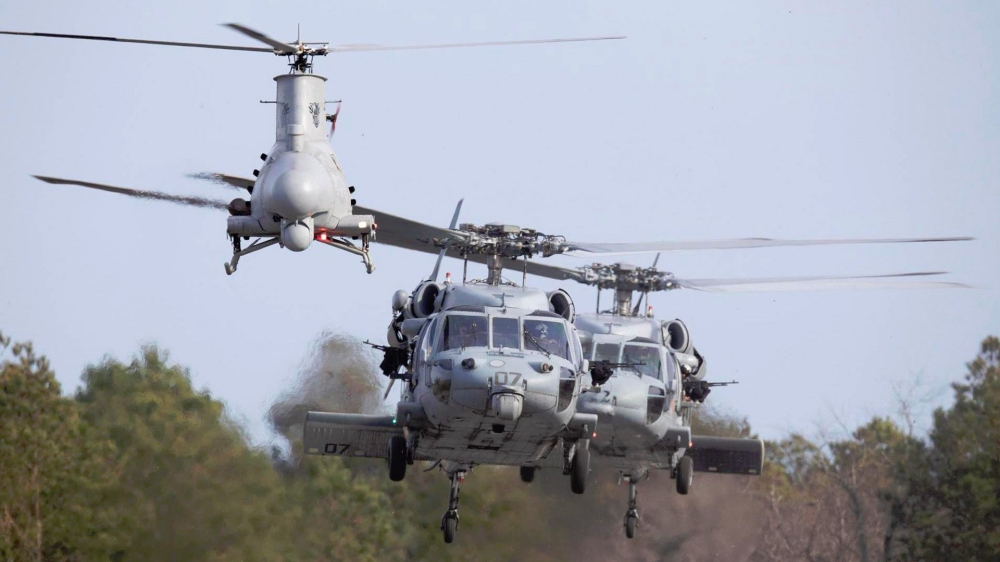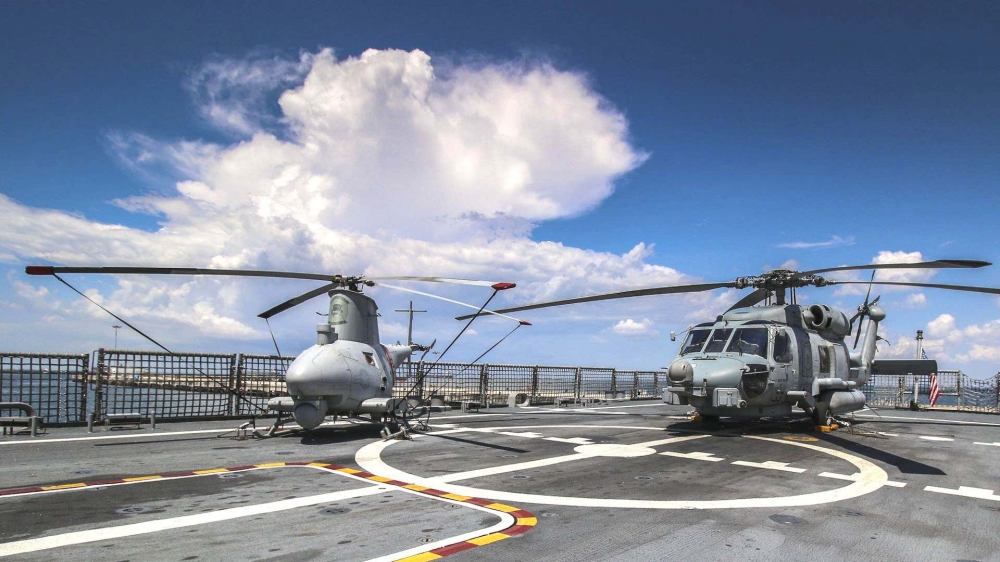Naval Air Systems Command (NAVAIR) has posted a request for information (RFI) for an Analysis of Alternatives for what it is calling the Future Vertical Lift-Maritime Strike (FVL-MS) program.
This announcement constitutes a Request for Information (RFI) for planning purposes. The Initial Capability Document (ICD) for Future Vertical Lift (FVL) Maritime Strike (MS), JROC validated on 8 November 2019 established a requirement for a vertical lift capability to support the US Navy, recapitalizing their existing fleet of MH-60R/S and MQ-8B/C systems. This new capability is expected to have an IOC in the mid-twenty thirty’s timeframe to support all described Navy missions.
The Office of the Chief of Naval Operations (OPNAV N98) has directed an Analysis of Alternatives (AoA) be conducted to support efforts to identify cost-effective alternatives to fill capability gaps in the MH-60R/S and MQ-8C as they begin to reach their end of service in the 2030s. The MH-60 Seahawk helicopters and the MQ-8 Fire Scout Unmanned Air Vehicles are the pillars of the Naval Helicopter Concept of Operations for the 21st century. The Warfighting Capability provided, whether deployed as Carrier Air Wing squadrons embarked on aircraft carriers under the leadership of carrier air wing commanders or as Expeditionary squadrons embarked on LHAs/LHDs, surface combatants and logistics vessels, is broad and unparalleled in naval warfare.
N98 has identified a requirement to assess potential solutions for:
1) Capability gaps due to the increasingly sophisticated adversary as well as
2) Capacity gaps incurred with ageing and expected retirement of the MH-60 Seahawk helicopters and the MQ-8 Fire Scout Unmanned Air Vehicles. Identification of solution options for these gaps for a family of manned and unmanned systems is of paramount importance and is expected to support the broad range of decisions associated with the recapitalization of the MH-60 Seahawk helicopters and the MQ-8 Fire Scout Unmanned Air Vehicles systems.
The alternatives will be evaluated for Naval Aviation Contributions across the full range of mission areas. Each unique attribute category was defined to assess potential capability gaps in this timeframe for these scenarios. They are (in no order of importance):
- Intelligence, Surveillance, Reconnaissance, and Targeting (ISR&T)
- Surface Warfare (SUW)
- Anti-Submarine Warfare (ASW)
- Mine Counter Measures (MCM)
- Air Warfare (AW)
- Electronic Warfare (EW)
- Search and Rescue (SAR)
- Command and Control
- SOF Support
- Embark Aviation and Air Capable Ships
- Conduct Logistics
- Conduct Patient Movement
- Signature Control
The Naval Air Systems Command is conducting a request for information to obtain industry input relative to its capabilities to potentially satisfy the needs identified in the FVL (MS) ICD and inform the FVL (MS) AoA.
Final responses to the RFI must be received no later than 5:00 PM EDT [13 April 2021; 75 calendar days from release].
Source: US Department of Defense


